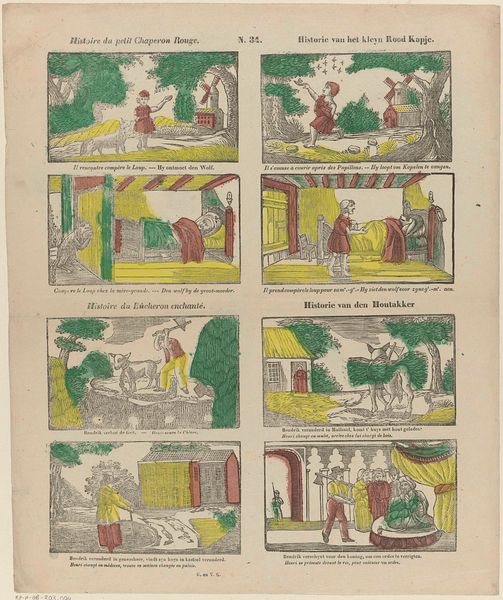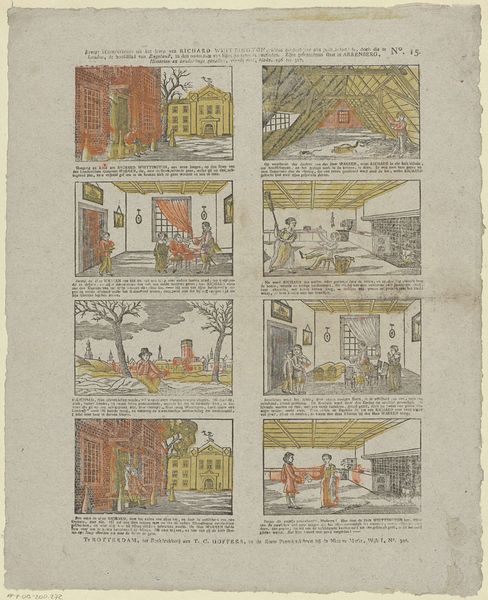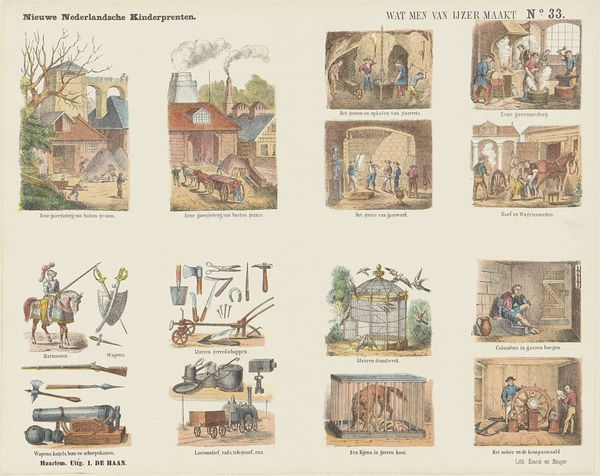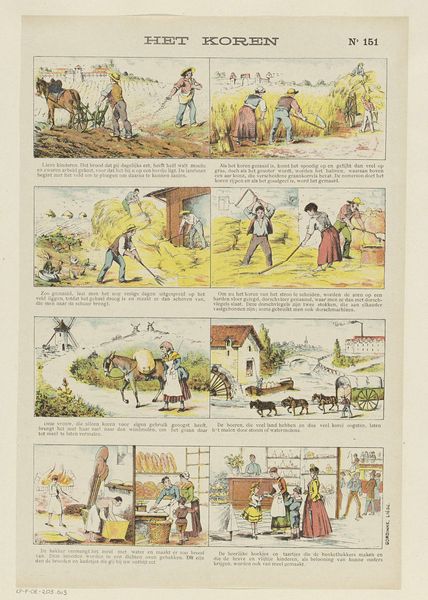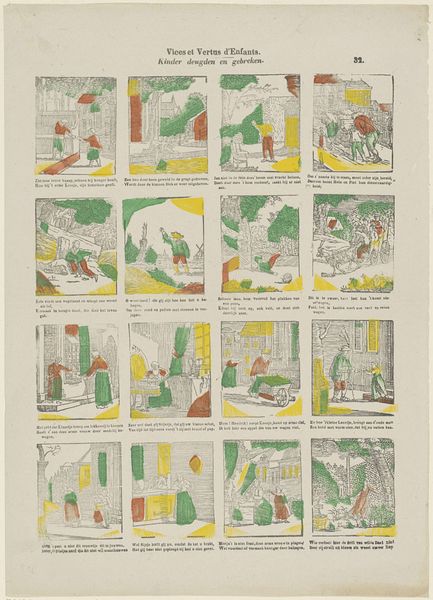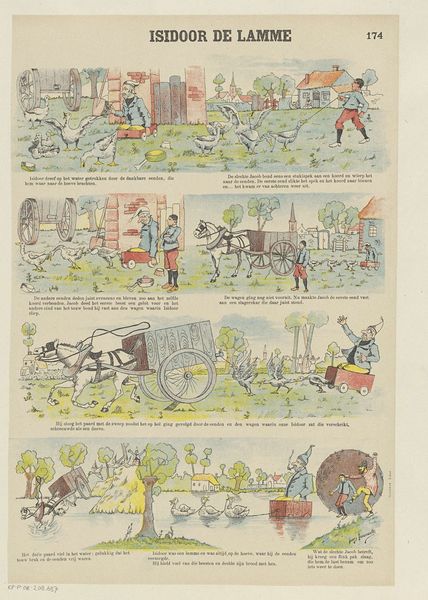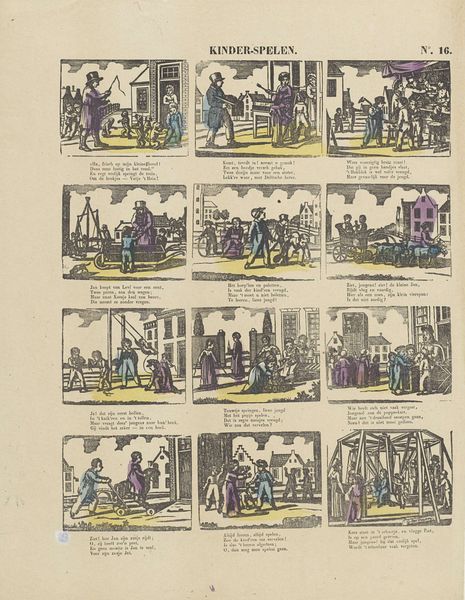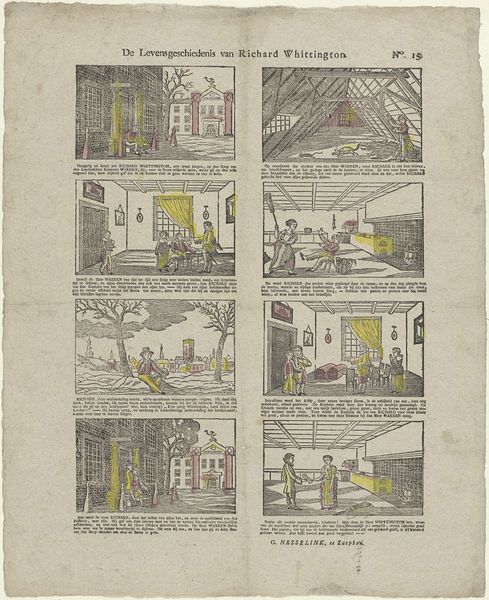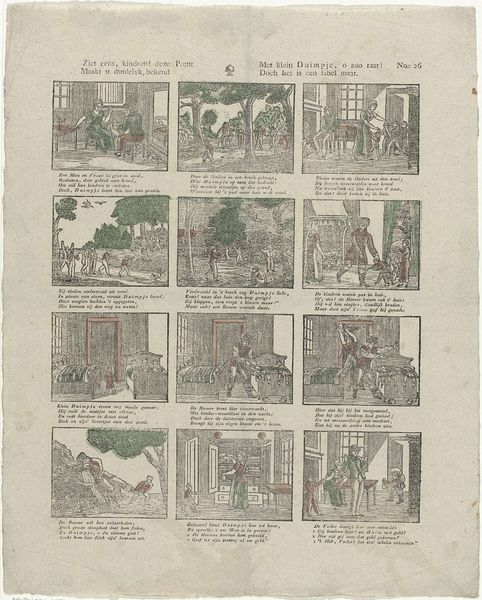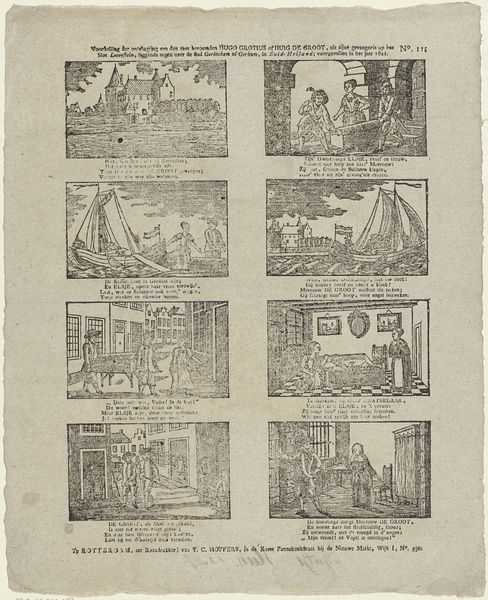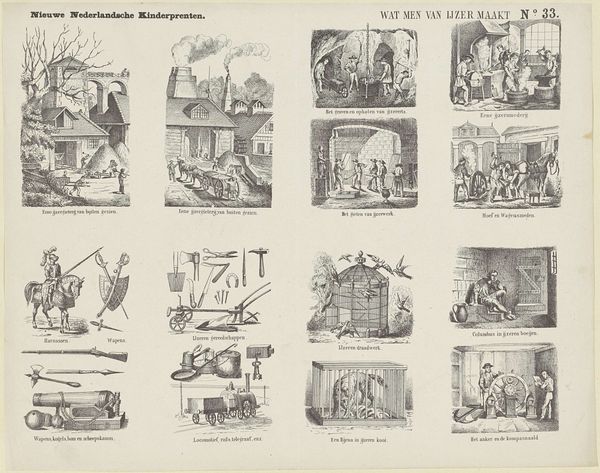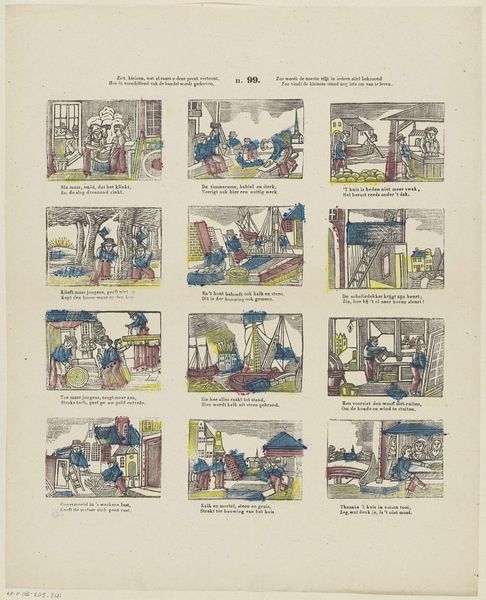
graphic-art, print
#
graphic-art
#
narrative-art
# print
#
genre-painting
#
realism
Dimensions: height 397 mm, width 270 mm
Copyright: Rijks Museum: Open Domain
Curator: Here we have "De steenkolen," translating to "The Coal," a print created sometime between 1894 and 1959 by A. de Ker, now residing here at the Rijksmuseum. It presents a series of vignettes depicting coal production. Editor: It strikes me as a… sequential narrative, almost like a comic strip. The constrained color palette lends a documentary-like feel. A glimpse into another world, another way of life. Curator: Precisely. The layout presents distinct phases, from the initial mining to what seems to be the coal's role in glassmaking. Each frame presents a carefully rendered slice of labour, each meticulously constructed composition speaks to the dignity, or perhaps the relentless nature, of manual work. Editor: And it also illuminates something about systems, both of extraction and production, of the late 19th, early 20th century. It displays this whole engine. Curator: Yes, viewed through a Marxist lens, it visualizes the modes of production of the time, illustrating, in sequence, the conversion of raw material to refined product. The print’s format facilitates an appreciation of how energy is harnessed for manufacturing, influencing its own aesthetic. Editor: It certainly underscores how coal fundamentally reshaped socio-economic systems and transformed the physical landscapes of labor. Note how it democratizes, it depicts labour, processes in ways previously only shown through elite artforms. The medium supports its social aims. Curator: Notice the restricted use of line. Observe the carefully considered shading. The artist is emphasizing form and texture, not through opulent colors, but through the contrast, the structural relationship, of the elements. Editor: It’s a compelling statement of industry as subject. A reminder of the hidden mechanisms underpinning the familiar. De Ker invites the public to bear witness. Curator: Ultimately, “The Coal” is a fine example of industrial-age artistry – a lesson in functional elegance. Editor: Indeed, and the representation is of course historically very timely as debates surrounding fossil fuel usage still dominate our world now.
Comments
No comments
Be the first to comment and join the conversation on the ultimate creative platform.
